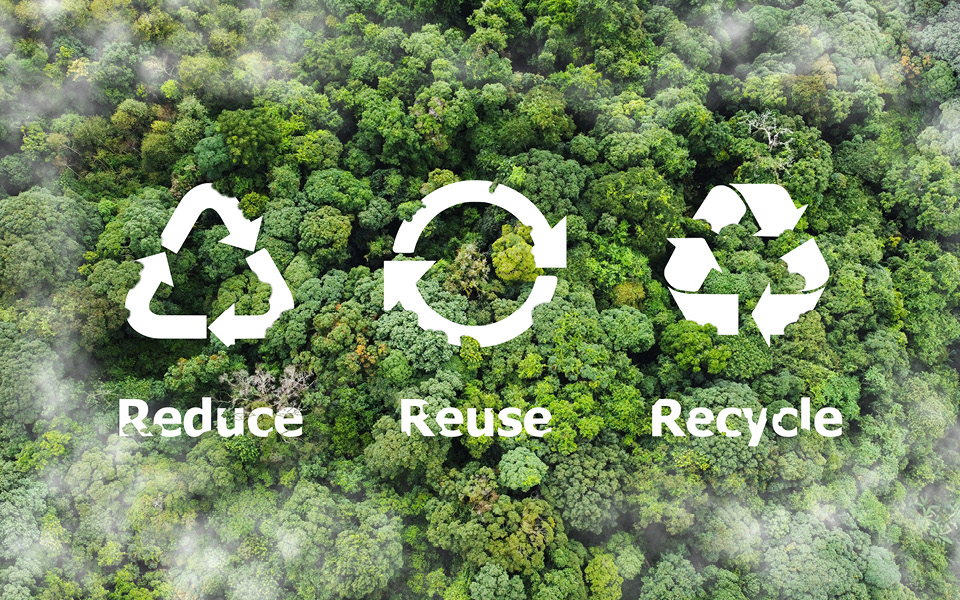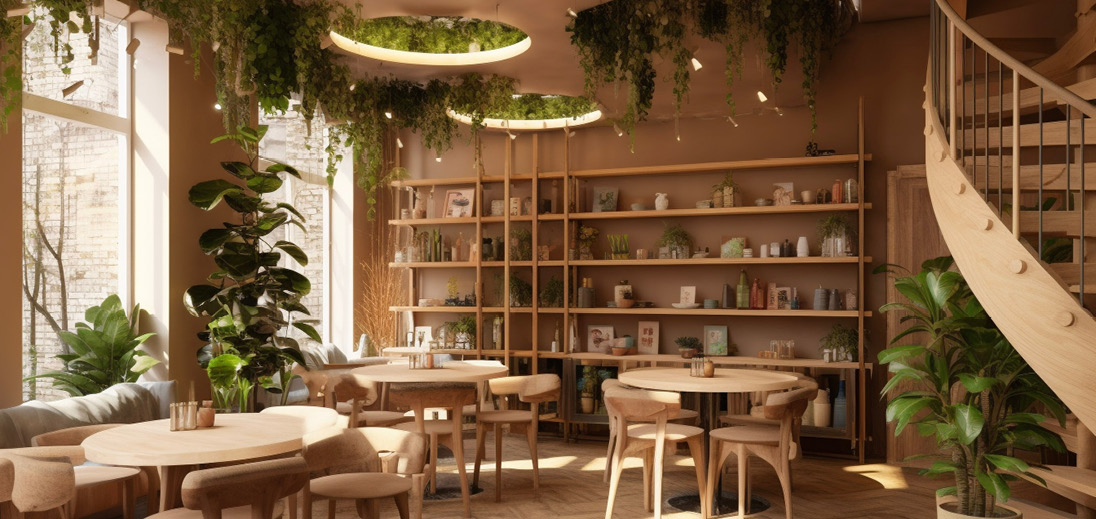8 tips for an eco-responsible retail design
65% of French consumers favour brands that use sustainable Visual Communication in their POS (point of sales). Discover 8 tips for a more eco-responsible retail design.
65% of French consumers favour brands that use sustainable Visual Communication in their POS (point of sales). Discover 8 tips for a more eco-responsible retail design.
Over 80% of POS materials other than cardboard are incinerated or buried. 30% of all POS materials go to the dustbin before reaching stores. These statistics show us that the shift towards eco-responsible retail spaces is compulsory. The call for sustainable transformation is loud and clear. Fortunately, there are solutions that we can apply from now on. Read our 8 tips to make your POS Visual Communication more sustainable.

Tip #1 — Reduce, Reuse, Replace (The 3R Strategy)
First, let’s assess the current state of your POS design and Visual Communication. Which materials do you use? In what quantity? For how long? Then, you can analyse them from each R of the 3R Strategy.
Reduce — Consider how you can reduce the quantity of materials used. Less materials doesn’t mean less POS communication. Quite the opposite, it’s an opportunity to focus on where you want to direct visitors’ attention.
Reuse — How can you reuse the same elements across multiple campaigns? The longer a product lives, the most you make of its ecological footprint.
Replace — Thirdly, you can replace non-sustainable materials (like plastics) with more eco-responsible alternatives (like cardboard).
The 3R Strategy promotes a more conscious approach to resource utilisation and buying experience.

Tip #2 — Stick to the essentials
This tip follows on from the previous one. You can rethink your in-store Visual Communication by aiming for design elements that are essential, intelligent, and reusable. A great way to reuse materials over time is to design a modular system with elements you can repurpose for different promotions.
Tip #3 — Think lifecycle right off the bat
From the design phase, prioritize materials that are easy to recycle or to repurpose. This way, you’ll ensure about the sustainability of your POS materials even before they’re made. Fibre based products or recycled aluminum are perfect examples of sustainable materials with a solid end-of-life plan.
Tip #4 — Promote reusability
Invest in displays and signage adapted for multiple campaigns and different store locations. This way, you reduce the need to produce new materials on a frequent basis. One simple thing you can do to make a display reusable is to avoid specifying dates.
Tip #5 — Use chalkboards and whiteboards
Any rewritable board is a smart investment towards a more sustainable retail. Add chalkboards or whiteboards for daily specials, seasonal messages, or promotional events. Magnetic or Velcro signage also allows for easy updates without the need for total replacement. Shift from single-use printed signs to reusable boards, they will cut down on waste and embody the essence of an eco-responsible POS.
Tip #6 — Go for reusable fabric backdrops
Fabric backdrops are a sustainable alternative to the vinyl/plastic ones. It’s even better if they’re made from recycled yarns. These backdrops are easy to interchange. You can refresh the look of your store without using much resources.
Tip #7 — Explore eco-responsible materials
Look for alternatives like recycled paper, FSC-certified cardboard, biodegradable materials, or cellulose-based products. You can explore deeper with innovative materials like bioplastics or plant-based composites, offering new possibilities for sustainable retail design.
.jpg)
Tip #8 — Opt for sustainable banners and displays
Still in the vein of sustainable materials, you can rethink your in-store banners and displays. For banners, the best materials look for recycled PET fabric. For displays, consider sustainably sourced wood (FSC-certified) or honeycomb cardboard. These choices reflect your commitment to sustainable retail and eco-responsible design. In addition, look for printing methods that use eco-responsible inks and reduce chemical usage.
Conclusion: leading the way in eco-responsible retail
Adopting these 8 tips in your POS communication goes beyond answering consumers' demand for sustainability. It's a commitment to the future of sustainable retail. By integrating eco-responsible solutions into your Visual Communication strategy, you set a standard for eco-responsible stores. The journey towards a sustainable retail environment is a collective effort, and every step forward counts.







